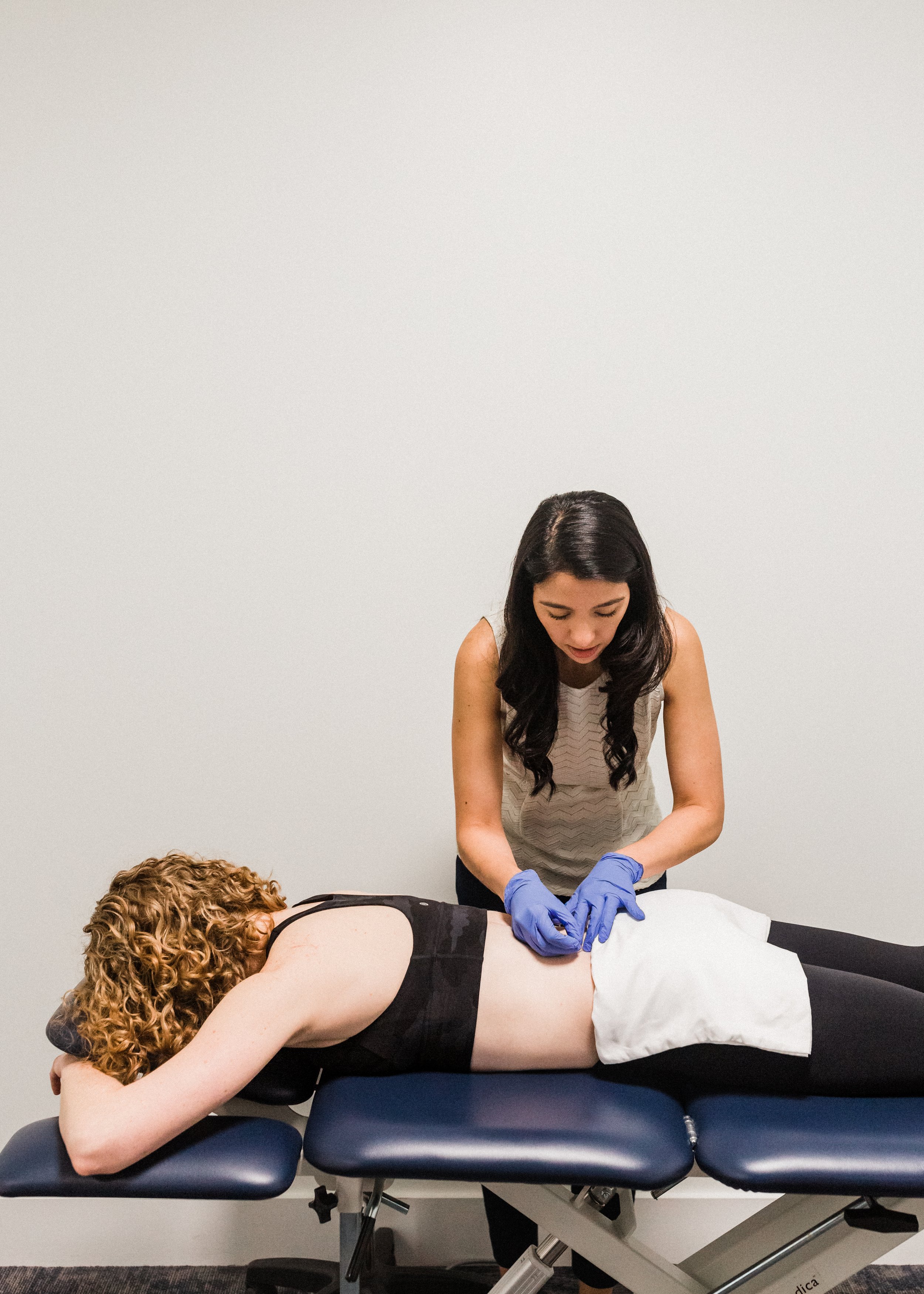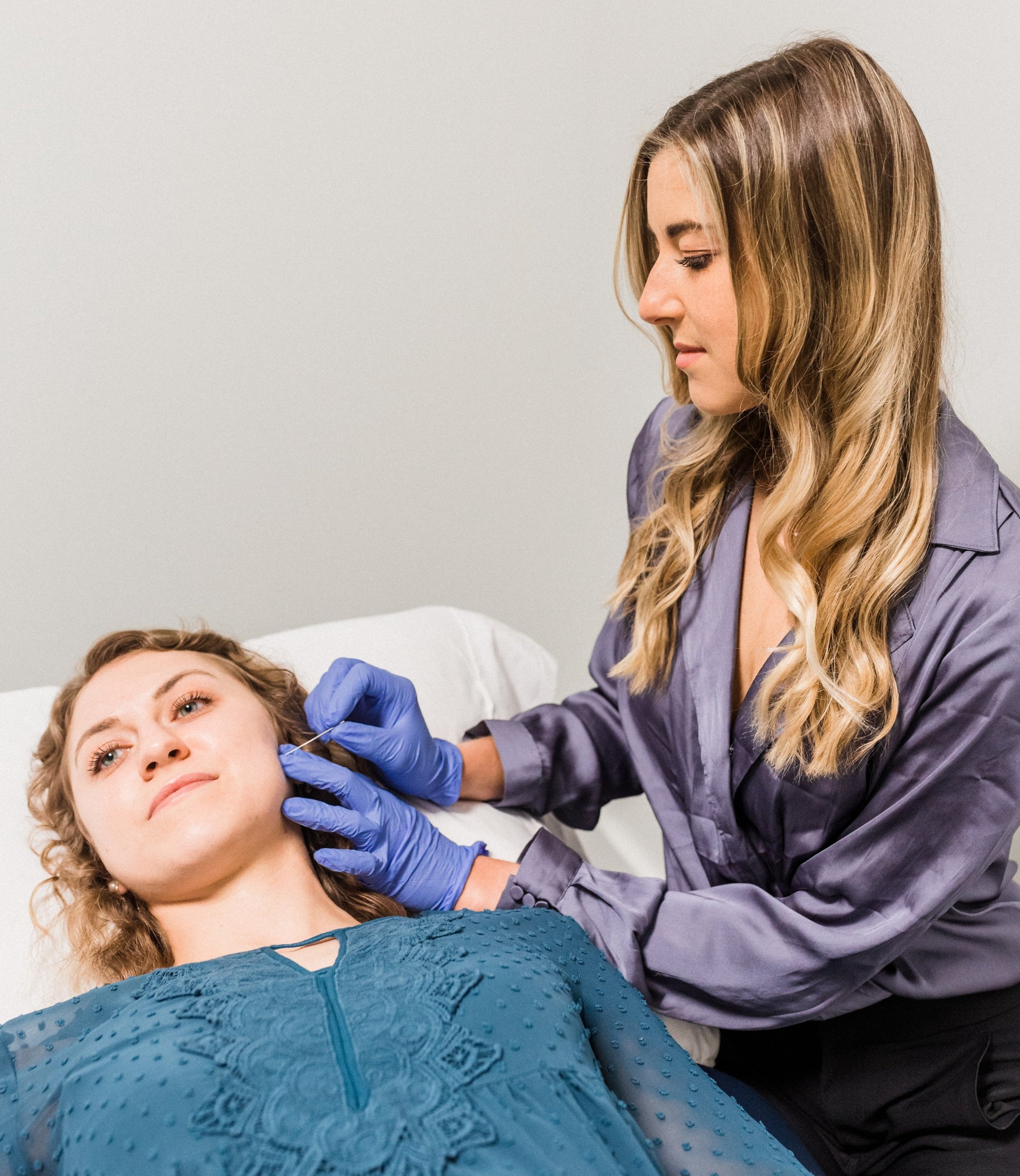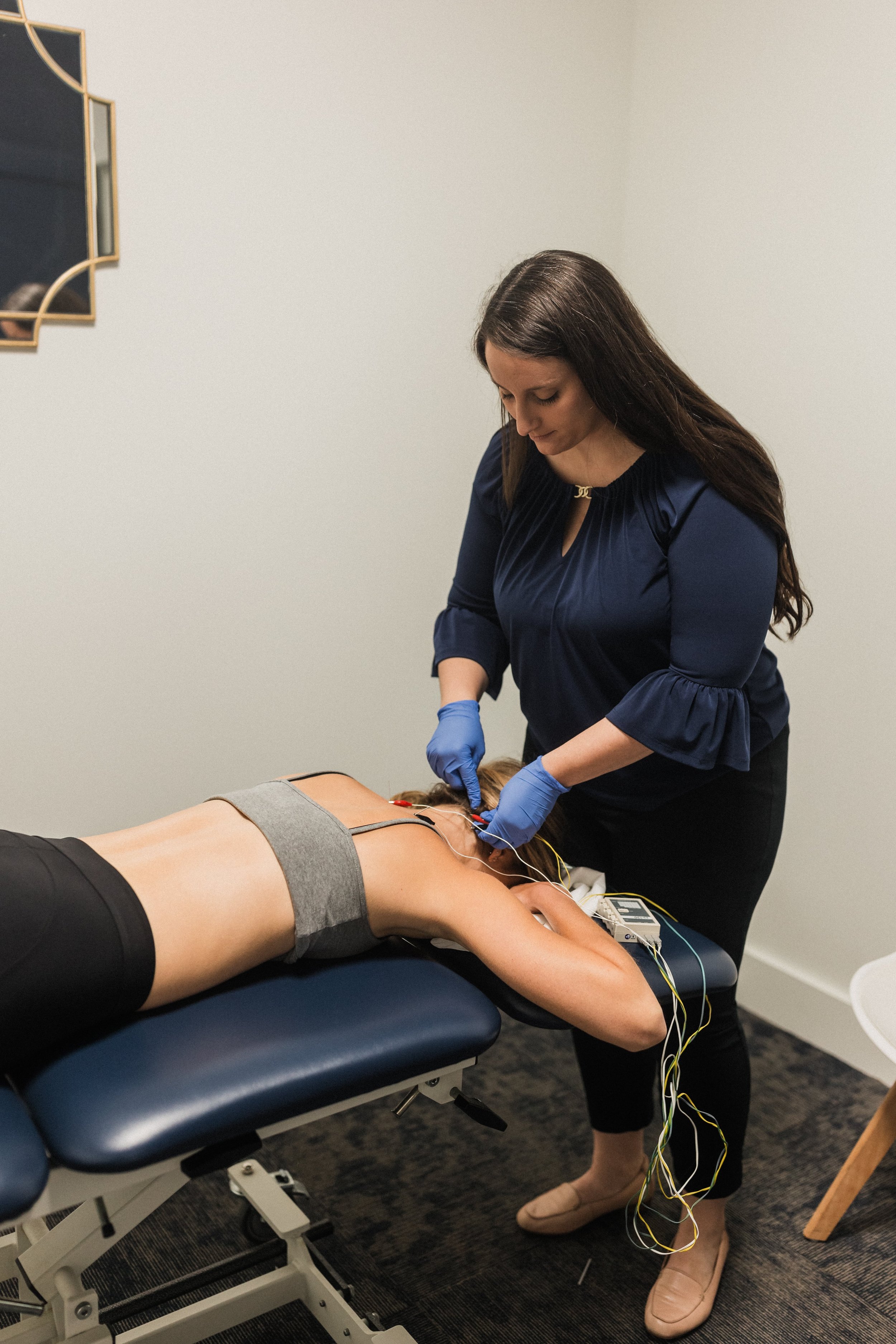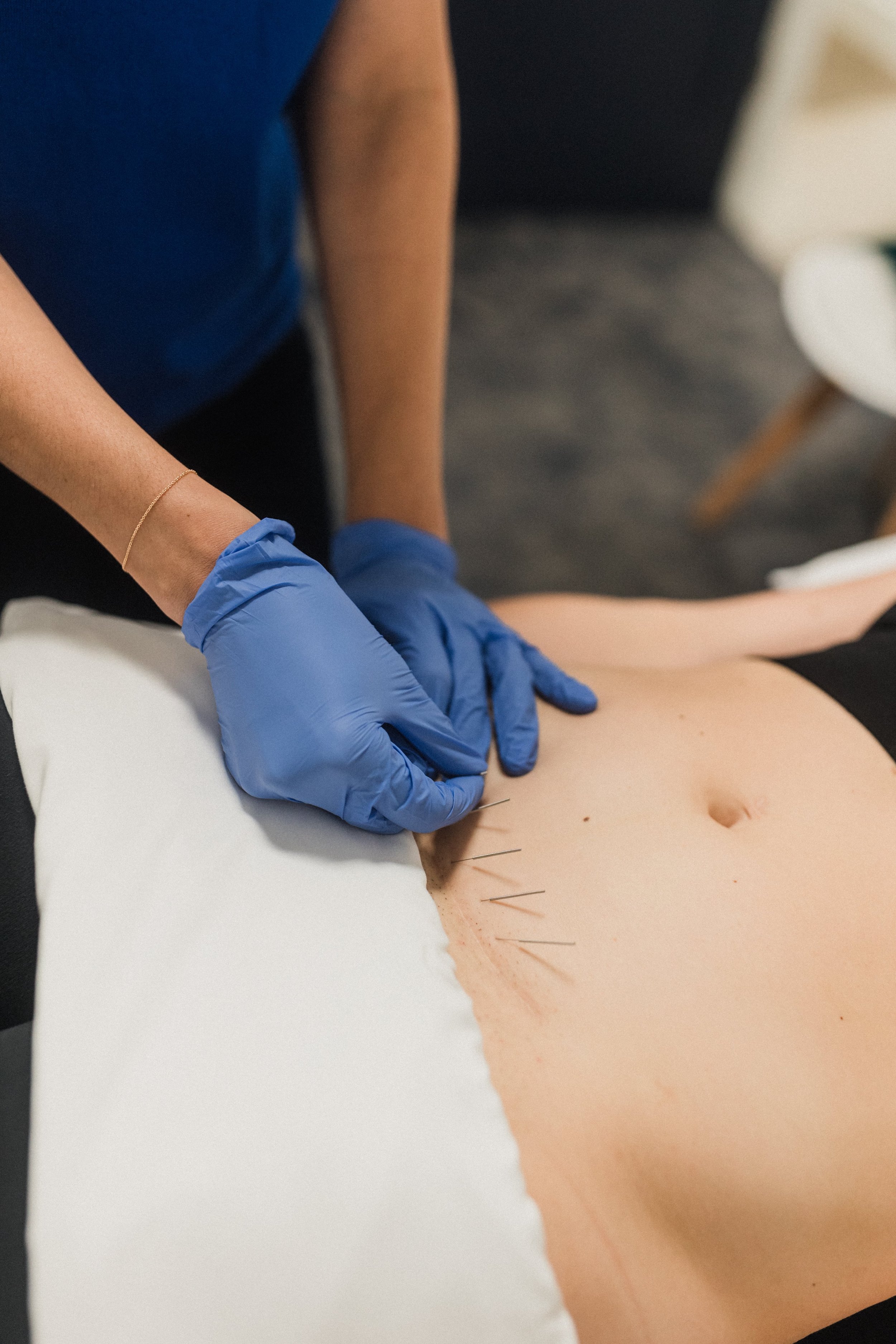
DRY NEEDLING
HELPING YOU MOVE BETTER, PAIN FREE!
Dry needling is a therapy intervention using a thin needle that treats myofascial trigger points for the management of pain and improved muscular function. This is a treatment used to complement other treatments prescribed by your physical therapist. After a thorough history and physical assessment, your physical therapist may recommend dry needling as a part of your comprehensive plan of care.
Pain affects how our bodies move. When pain becomes chronic, pathways are formed in the brain that can easily be triggered resulting in frequent flare ups. Dry needling changes the way the brain and muscles communicate, helping the system return to a more normal state and improving muscle movement patterns. It is important to always pair dry needling with other therapeutic interventions, such as specific exercise for neuromuscular reeducation, to have the best results with treatment.
WHAT ARE THE BENEFITS?
• Pain reduction.
• Improved muscle firing and higher max force production following treatment.
• Faster relaxation of muscle.
• Improved range of motion.
• Improved scar and fascial mobility.
• Improved athletic recovery.
• Increases blood flow to the tissues treated.
• Reduction of edema and improved lymphatic movement.
• Inhibits peripheral inflammation.
• Clears accumulation of chemical bioproducts of muscle function after athletic performance or injury.
• Increases input into the somatosensory cortex of the brain to improve coordination and proprioception.
NUMBER OF TREATMENTS
There is no set number of treatments for each person. We have many athletes that see us regularly during training, pre and post competition as part of their wellness and recovery program, as well as patients that use us as needed to manage pain.
To start it is recommended to plan for 3-5 dry needling sessions to allow your body to adapt to the treatment and see benefits. Once you start dry needling, you have the right to change your mind about the technique at any point in your plan of care if you do not feel like it is beneficial to you. The best feedback you can provide to your physical therapist is how you felt immediately after, within 12-24 hour post-treatment, and 2-3 days after treatment so that you and your physical therapist can modify and change the approach as needed to give you the best results.
AREA OR CONDITIONS COMMONLY TREATED
Athletic recovery during training pre and post competition
Headaches
Neck and back pain
Rotator cuff injuries
Epicondylitis
Tendinopathy/tenosynovitis
Surgical scar tissue
Chronic pain
Myofascial pain
Hip and knee pain
Bursitis/capsulitis
Radiculopathy
Achilles tendinopathy/plantar fasciitis
Neuropathic pain
Temporomandibular joint disorders
Pelvic floor dysfunction
-

Orthopedics
-Middle, upper and lower back pain
-Shoulder pain
-Knee pain
-TMJ, headaches, and whiplash
-Post operative orthopaedic pain and overuse
-Injuries
-Hip pain -

Sports Performance
-Muscle strains
-Coordination and strength improvements
-Tendonitis
-General “tight muscles” -

Pelvic Health
-Pelvic pain
-Endometriosis
-Pain with intercourse
-Interstitial cystitis
-Tailbone pain
-Caesarean scars
-Prostatitis




